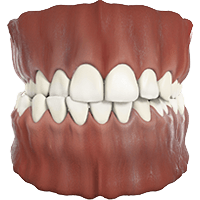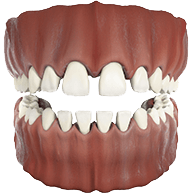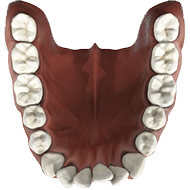No-preparation veneers or laminated veneers are a cutting-edge, less invasive cosmetic dental treatment that has several advantages over conventional veneers. Dentist London recommends no prep veneer as a superior treatment option in front teeth wear or trauma because of their simple procedure, ability to preserve natural tooth structure, and attractive results.
Scientific evidence in various studies supports the No-Preparation veneer as the best choice. A study published by the National Institute of Health (NIH) reveals that the bonding strength of porcelain thin-layer veneer improves with enamel in a no-preparation technique.
According to another report published in BMC Oral Health, with proper maintenance, the survival rate and quality of restoration in non-prep or laminated veneer is the same as other types of veneer with teeth structure preservation.
Reasons behind no-preparation veneers are the better choice.
Minimal Invasion Method
Maintaining the Natural Tooth Structure
The fact that little or no enamel removal is required for no-preparation veneers is one of their main benefits. A thin veneer layer perfectly covers the tooth surface to restore a perfect smile.
Reduced invasion procedure required during no-prep or laminated veneer placement that provides better support to the restoration with underline enamel.
It preserves the native tooth’s integrity during its installation as compared to other restorations such as dental bridges that require adjacent teeth alteration for support.
Patient Comfort
Non-invasive Solution for Nervous Patients: Patients who are apprehensive about undertaking invasive dental procedures may feel more at peace with no-prep veneers, which need minimal intervention.
No need for anaesthesia: No-prep veneers, unlike standard veneers, rarely require local anaesthetic because there is no dental tissue contouring required. This makes the procedure more comfortable and less daunting for the patients.
Reduced Tooth Sensitivity: Preserving enamel minimizes postoperative sensitivity, a common issue with traditional veneers that increase the chances of deep dental exposure during their preparation.
Lower Risk of Pulpal Involvement: Without significant preparation, the risk of affecting the pulp (nerve) of the tooth is significantly reduced.
Lower risk of decay under restoration: Preserved enamel and a firm seal, limit the possibility of future dental decay beneath the veneer.
Easy and Fast Application
The placement technique for no-prep veneers is simpler and faster for minor cosmetic concerns. Reduced treatment time, impression, fabrication and placement of veneer hardly required 1 to 2 dental visits depending upon the usage of dental technology. There is no need for temporary veneers while you wait for the final product.
Natural Look
Because no-preparation veneers are so thin, about 0.2-0.5 mm, they can mimic the appearance and transfer light the same as dental enamel. This property helps in regaining an aesthetically pleasing and realistic smile makeover.
Versatility: No-prep veneer is useful for treating worn teeth, attrition and minor discolouration or stains. It can easily close minor gaps between the teeth.
Customizability: Each veneer is specifically made to match the patient’s natural teeth in colour, shape, and size, resulting in a harmonious and seamless aesthetic transformation.
Suitable for a wide range of patients.
Patients with good dental health, strong enamel, and mild cosmetic problems are ideal candidates for no-prep veneers. This restorative option is pre-eminent to someone who improves his smile without undergoing permanent teeth structure changes such as a dental crown.
Longevity and Maintenance
Durability: Modern no-prep veneers, especially those made of high-quality porcelain or composite resin, are long-lasting and stain-resistant. With proper maintenance, they can last for 10-15 years or more.
Enhanced Adhesion: Enamel structure better adheres with restoration. No-prep veneers have a more stable and durable bond because they do not expose dentin.
Easy to maintain: No-prep veneers maintenance, is simple and fits with typical oral hygiene habits, including brushing and flossing. Avoid hard or sticky food that could scratch the surface.
A reasonably priced option.
No-preparation veneers provide less burden on the patient’s pocket as compared to traditional veneers, less numbers of dental visits and lack of the need for temporary veneers or intensive procedures minimize overall costs.
Reversibility
No-prep veneers are more reversible than traditional veneers since the natural tooth structure is preserved. In many situations, the process can be undone because the enamel remains intact if the patient chooses to have it removed for alternative restorative treatment such dental crown.
Biocompatibility
No-prep veneers are made from biocompatible materials like porcelain or composite resin, which reduces the risk of discomfort or unpleasant responses in the oral cavity.
Materials with Minimal Thickness: No-prep veneers are made up of incredibly thin, advanced materials like feldspathic porcelain (glass-like substance) and pressed ceramics. Even though these materials are wafer-thin, they yet retain their strength and beauty. Material that supports no-preparation veneer are
- Porcelain: High-translucency porcelains, such as lithium disilicate (Emax), are utilized for both aesthetic appeal and strength. These ceramics revolutionize cosmetic dentistry with exceptional durability, stain-resistant, and biocompatible.
- Composite Resin. Although composite resin is less durable than porcelain, it can be used for no-prep veneers. These are cheaper and easy to repair.
- Nanotechnology. Advances in material technology, like nano-ceramics, provide ultra-thin veneers with increased strength and natural appearance.
Understanding the science behind no-Prep Veneers
No-preparation veneers are a groundbreaking dental treatment that enhances the smile look while preserving natural tooth structure. They are based on basic principles such as advanced adhesive dentistry, ultra-thin material technology, and precise clinical procedures. Here’s a detailed look at the clinical and biomechanical background of no-prep veneers.
Scientific Principles for No-Preparation Veneers
Aesthetic Dentistry
- Natural Look: No-prep veneers are intended to mimic the transparency and appearance of natural enamel. Modern materials, such as lithium disilicate porcelain, offer longevity and a realistic finish.
- Colour blending: With advanced shading selection procedures, veneers can blend perfectly with the surrounding teeth.
Adhesive dentistry.
- Enamel Bonding: For better adhesion and durable attachment, the veneer and enamel must form a strong bond. No-prep veneers improve bond strength by retaining the majority or all the enamel. Adhesive cement is essential for attaching veneer to an enamel surface. Etchants are chemicals that produce micromechanical retention on the enamel surface, which improves the attachment of no-prep veneer to enamel.
- Dual-Cure Resin Cements: They offer exceptional stickiness and long-lasting durability.
Technology Supporting No-Prep Veneers
Digital dentistry creates dramatic advances in tooth restorative therapy; with no-preparation veneers, it improves accuracy and efficiency with
1. Intraoral scanner
This technique carefully examines the complete oral cavity and records all the details of teeth, gum and soft tissue precisely, on which cosmetic dental makes no-preparation veneer’s treatment plan, it replaces traditional impression and cast , traditional method use for study and treatment plan.
2. Digital Smile Design (DSD)
DSD software enables precise planning of veneer shape, size, and placement to match the patient’s facial aesthetics and smile goals. It helping in visualize the outcome of the no-prep veneer before starting the procedure which guide the patient to decide the right treatment.
3. CAD/CAM Technology.
Computer-aided design and technology ensure that no-prep veneers are crafted with microscopic precision for an exact fit.
4. 3-D Printing
It is a time saving advanced technology, ensure that no-prep veneers are fabricated and cemented on the tooth surface on the same day in a single visit.
5. Laser etching: Lasers are often used to softly erode the enamel surface, which improves bonding while preserving tooth integrity.
No-preparation veneers suitable for
Slight discolourations or spots that cannot be eradicated with dental whitening treatment.
Alternative fixed orthodontic treatment; for fastest result in minor misalignment or gaps (diastemas) between teeth
Teeth that are worn down, chipped, or somewhat cracked.
Small teeth should appear more proportionate.
Patients with adequate enamel thickness and little degradation or restorations.
Challenges with no-prep veneers
Challenges
Case Selection: Not all patients are candidates for no-prep veneers, larger dental flaws and deep discolouration are difficult to restore with minimal invasive veneers.
Thin Material Durability: Veneers can be weak if subjected to severe strain, composite no-prep veneer gets easily stained.
Aesthetic Matching: Skilled planning and fine detailing are required for smooth integration.
Solutions
Cosmetic dental surgeon expertly resolves these issues with;
- Use digital smile design (DSD) to improve treatment planning accuracy.
- Combine no-prep veneers with other cosmetic procedures, such as whitening or orthodontics, to achieve more complete results.
- Educate patients about correct care to avoid injury and avoid hard and stain-causing food to improve the durability of no-prep veneer.
Limitations to Consider
No-prep veneers are a preferable alternative in many circumstances, although there are some limits.
- They are not appropriate for severe discolouration, wide gaps, or significant tooth misalignment.
- Patients with abnormal bites and bruxism habits may not be suitable candidates. They can remove the no-prep veneer from the tooth surface. Patients with bruxism (teeth grinding) or weakened enamel
- Week enamel: Their ultra-thin construction may not be as successful in concealing severe underlying faults as regular veneers. Weak or compromised enamel (for example, erosion or tooth decay).
Conclusion
No-preparation veneers provide noninvasive, immediate easiest veneer installation to regain an aesthetically pleasing smile. It improves patient comfort by reducing tooth sensitivity and enhancing the natural look with a thin veneer layer. With proper care, it provides durable results. Proper case selection and treatment planning are important for avoiding complications and failure of no-prep veneers.













